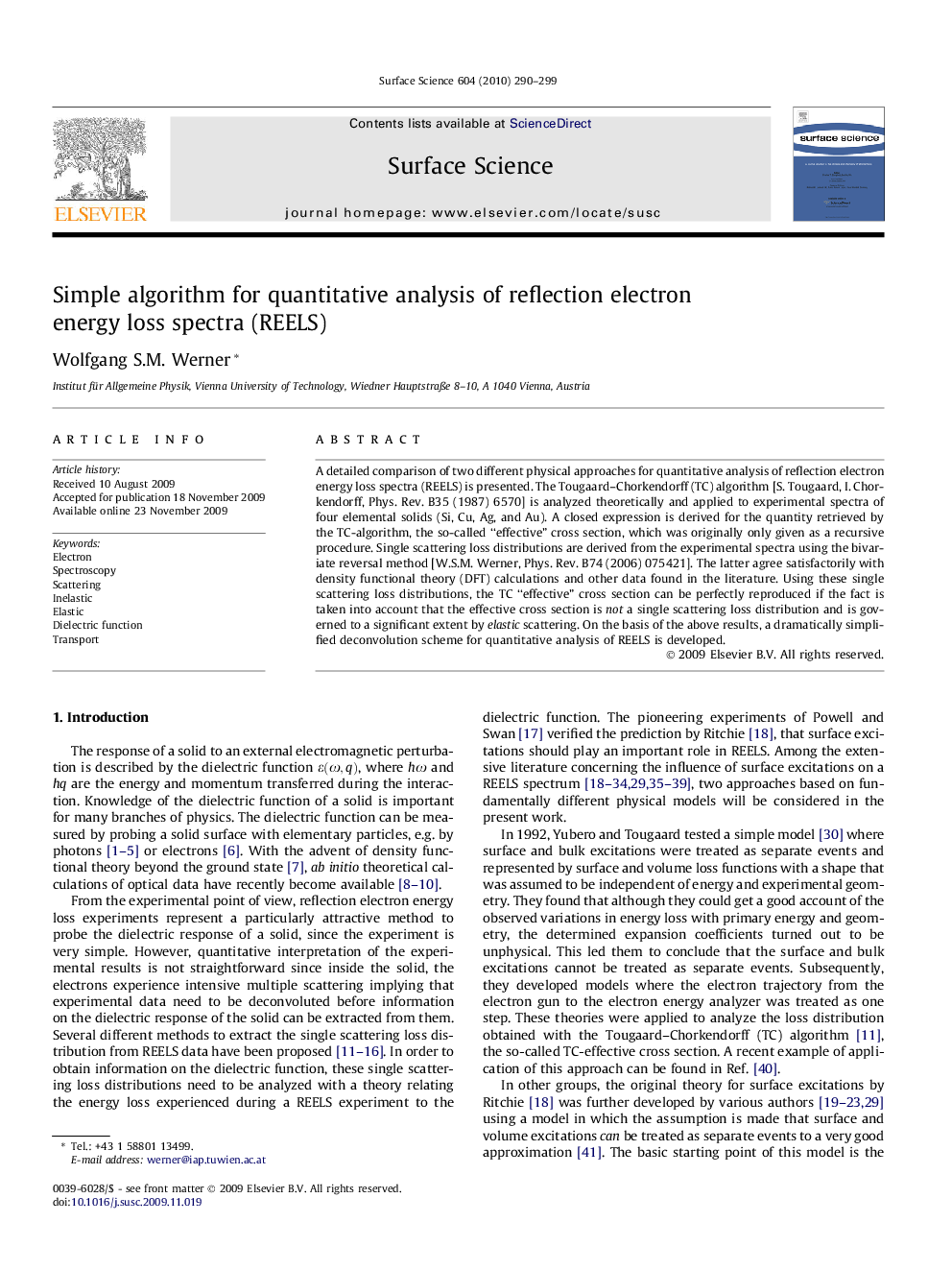| Article ID | Journal | Published Year | Pages | File Type |
|---|---|---|---|---|
| 5424127 | Surface Science | 2010 | 10 Pages |
Abstract
A detailed comparison of two different physical approaches for quantitative analysis of reflection electron energy loss spectra (REELS) is presented. The Tougaard-Chorkendorff (TC) algorithm [S. Tougaard, I. Chorkendorff, Phys. Rev. B35 (1987) 6570] is analyzed theoretically and applied to experimental spectra of four elemental solids (Si, Cu, Ag, and Au). A closed expression is derived for the quantity retrieved by the TC-algorithm, the so-called “effective” cross section, which was originally only given as a recursive procedure. Single scattering loss distributions are derived from the experimental spectra using the bivariate reversal method [W.S.M. Werner, Phys. Rev. B74 (2006) 075421]. The latter agree satisfactorily with density functional theory (DFT) calculations and other data found in the literature. Using these single scattering loss distributions, the TC “effective” cross section can be perfectly reproduced if the fact is taken into account that the effective cross section is not a single scattering loss distribution and is governed to a significant extent by elastic scattering. On the basis of the above results, a dramatically simplified deconvolution scheme for quantitative analysis of REELS is developed.
Related Topics
Physical Sciences and Engineering
Chemistry
Physical and Theoretical Chemistry
Authors
Wolfgang S.M. Werner,
